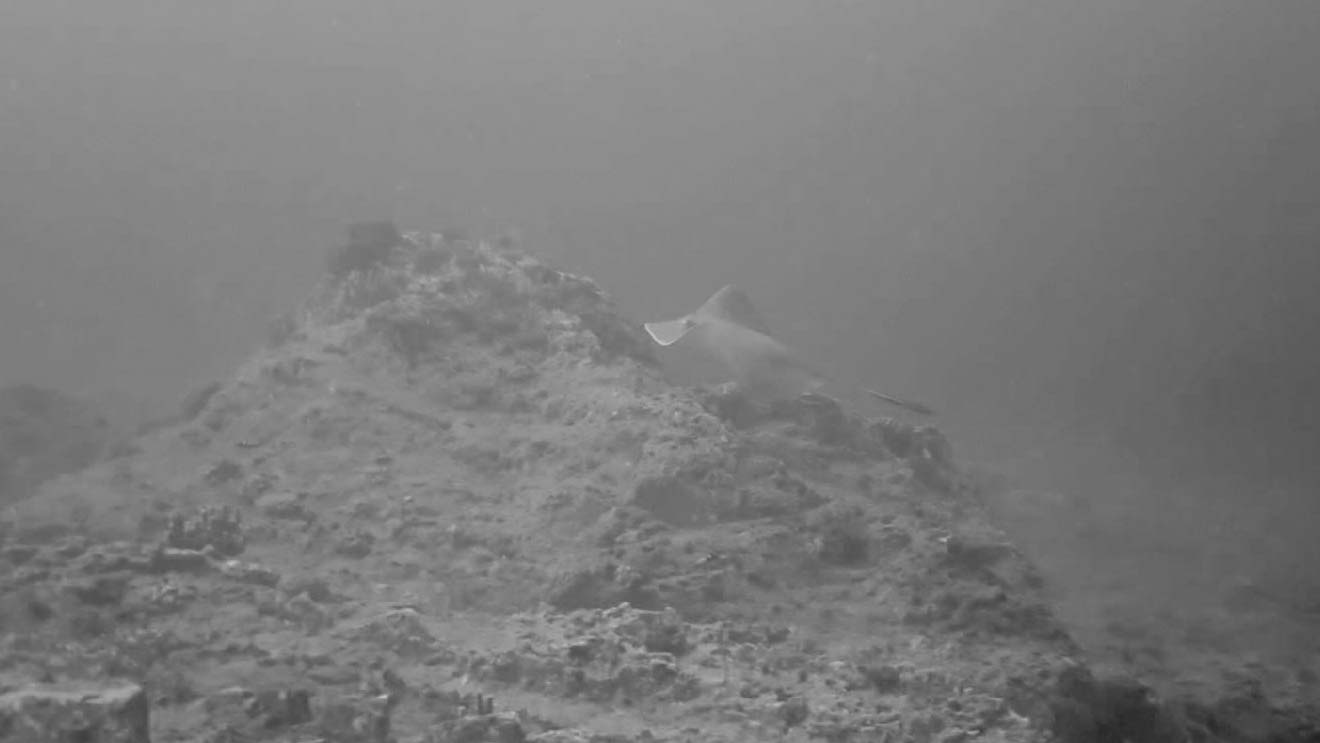The Longest Surface Interval
/685 days. 1 year, 10 months, 16 days. That was the length of my last surface interval. It's embarrassing really, especially when Aaron and I had gone 12 for 12 (at least one dive per month, every month) for nearly three years. However, as I prepared to take my giant stride off the boat into the dark waters of the Gulf of Mexico, the closest land more than a 100 nautical miles away, wearing a wet suit (which still fit, surprisingly, after having two babies) and the rest of the gear necessary to support human life underwater, there was a sense of exhilaration, and also trepidation. Right hand on my mask, my left on the waist band of my harness, my stomach momentarily somersaulted as I stepped off the boat and started falling before plunging into the water in a cloud of bubbles. And with that first jump, my longest surface interval since we were certified in 2012, came to an end.
The water was warm - much warmer than I had expected. We cut our teeth diving in the cold waters of the Great Lakes, where the bottom temperature is a steady 39F year round. But the warm surface waters of the Gulf felt nice - there wasn't that immediate chill that hits the minute you enter the water. It felt like a warm hug, welcoming me back after being gone for so long. But that sense of peace was fleeting, replaced by the smallest sense of panic resulting from the current I wasn't expecting. It may well have been a minor current, but to me, it was ripping. I drifted with the current before grabbing on to the guideline the boat's dive masters had set out for us. Aaron was already in the water, waiting for me. Together, we started to pull ourselves down the line which was tied off to the buoy at 30 feet. That sense of exhilaration I felt quickly turned into stress, tinged with the tiniest bit of fear, as I fought the current. My gear which I had been so comfortable in the last time I dove now seemed cumbersome and heavy. Hoses were getting tangled, I bit off part of my regulator's mouth piece, and it kept getting pulled out of my mouth by the current, resulting in small amounts swallowed sea water. I switched to my backup for a brief moment to get a couple of good breaths in, and try to calm myself. Aaron asked me if I needed to call the dive, but I was stubborn. I knew I could handle this, I just needed a minute. But this is exactly how I expected this first dive to go. I had zero expectations about jumping in the water and not having to, physically and metaphorically, untangle myself. Unfortunately, I missed the part in the dive briefing about the current abating around 20 feet and I had decided that 17 feet was the best place to get myself sorted out. Had I descended just a few more feet, most of my issues would have alleviated.
greasy grouper. photo courtesy of Dustin Ainsworth of SouthEast Texas Scuba
Aaron under water. photo courtesy of Dustin Ainsworth of SouthEast Texas Scuba
With everything sorted and a hand on my regulator to keep the current from ripping it out again, we resumed pulling ourselves down the line. Deeper and deeper we dropped until we could see the sea floor materialize. Whereas I had been expecting a colorful burst of corals and fish, the reef was surprisingly.....gray. Not lifeless by any means, but much more monochromatic than I was expecting. Tucked in nooks and crannies in the rocks were eels, so many of them I lost count, the occasional octopus, hundreds of fish and sea urchins, and quite a few of the invasive lion fish. Soft corals were absent, but hard corals were plentiful. The geography of the bottom was some of the most unique I've seen - limestone plates jutted vertically out of the sea floor. The uneven strata of the layers providing perfect spots for fish to hide and make their home. Visibility wasn't great, but it wasn't terrible either. In the midst of our dive, a string ray swam in front of us. It was quick, but we were able to catch a brief glimpse of him.
swimming ray. Photo courtesy of Dustin Ainsworth of SouthEast Texas Scuba
This part of the Gulf is unique. Thousands of years ago when the Gulf was shallower and hotter, evaporation caused salt deposits on the sea floor. As sediment from rivers that empty into the Gulf built up, these salt deposits were forced upward into so-called salt domes. These aren't sharp domes, they are more like gently rolling hills on the sea floor. The Stetson bank, where we did most of our diving, comes within about 55 feet of the surface and is a long, cigar shaped salt dome. The surrounding seafloor lies at a depth of nearly 200 feet. Due to the unique combination of the nearby deep waters, the coral reefs with warm, shallow waters, and the currents, divers have the potential to see a varied abundance of sea creatures. From juvenile parrot fish and spotted moray eels to rays and whale sharks, there really is no telling what you'll see on any given dive. And that's half the fun of it!
lion fish. photo courtesy of Dustin Ainsworth of SouthEast Texas Scuba
Barricuda in the current. photo courtesy of Dustin Ainsworth of SouthEast Texas Scuba
After a 40 minute dive, our breathing gas levels were at the point where we needed to end the dive. We made our way back to the buoy line and ascended. While fulfilling the requisite safety stop at 15 feet, we were able to watch a small school of barracuda. The long, bullet-shaped fish floated effortlessly in the water, noses pointed into the current. They hardly moved except for the barely perceptible flick of their tail. Safety stop complete, I let the current do the work of moving me up the line towards the back of the boat. I had to let go of the guide line, a moment of exhilarating freedom taking over as I floated with the current, in order to get back to one of the two tow lines tied off to the ladders on the back of the boat. Fins removed, I pulled myself to the ladder and climbed out. And just like that, I had broken my longest surface interval to date. It definitely wasn't the easiest dive, or the most elegant and comfortable on my part, but the band-aid had been ripped off, and with it, all the trepidation and anxiousness I didn't realize that had built up. Most importantly, I remembered how much I love diving, love being underwater and the feeling of weightlessness it evokes, and how amazing it is to dive with my favorite dive buddy.
Still my favorite dive buddy






















